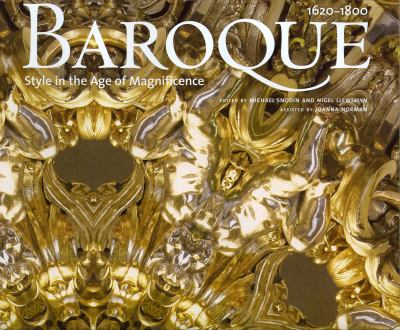'Tattoo', derived from a Polynesian word, was first popularised by James Cook, and Hambly quotes Cook on the proliferation of tattooing: "The universality of tattooing is a curious subject for speculation." Contemporary interest in tattooing as a sub-culture arguably began with the excellent Re/Search book Modern Primitives, edited by Andrea Juno and V Vale. The World Of Tattoo, by Maarten Hesselt van Dinter, is the most comprehensive tattoo history. Also, Decorated Skin (originally published in German as Geschmuckte Haut), edited by Karl Groning, is a well-illustrated guide to tattooing and other forms of body art.
25 August 2015
The History Of Tattooing
'Tattoo', derived from a Polynesian word, was first popularised by James Cook, and Hambly quotes Cook on the proliferation of tattooing: "The universality of tattooing is a curious subject for speculation." Contemporary interest in tattooing as a sub-culture arguably began with the excellent Re/Search book Modern Primitives, edited by Andrea Juno and V Vale. The World Of Tattoo, by Maarten Hesselt van Dinter, is the most comprehensive tattoo history. Also, Decorated Skin (originally published in German as Geschmuckte Haut), edited by Karl Groning, is a well-illustrated guide to tattooing and other forms of body art.
18 August 2015
BBC Radio
I've been speaking to four different BBC radio stations yesterday and today, discussing the bombing at the Erawan Shrine that took place in Bangkok yesterday. Last night, I spoke to BBC Coventry and Warwickshire (the station serving my home town) and another local station, BBC Hereford and Worcester. Tonight, I spoke to the regional BBC WM and the national BBC radio 5 Live.
14 August 2015
The History Of Modern Fashion
While the book's main emphasis is on womenswear, each chapter also includes coverage of menswear and even childrenswear, both of which are often omitted from histories of fashion. The primary fashion centres (France, the US, Italy, and the UK) receive extensive coverage, though the book also recognises "the growth of the fashionable world over time", with Asian influences given more attention than in other histories of modern fashion.
Auguste Racinet's Complete Costume History (reprinted in two volumes, edited by Francoise Tetart-Vittu) ended where The History Of Modern Fashion begins. Francois Boucher's excellent History Of Costume In The West (updated as 20,000 Years Of Fashion) surveyed the history of costume in Europe. Millia Davenport's Costume Book (in two volumes) covered European and American costume history. Patricia Rieff Anawalt's Worldwide History Of Dress and Leslie Steele's Encyclopedia Of Clothing & Fashion (three volumes) have extensive coverage of non-Western traditional dress.
The History Of Modern Fashion's publisher, Laurence King, has also produced comprehensive histories of other fields of art and design, including A World History Of Architecture, A History Of Interior Design, Graphic Design: A New History, History Of Modern Design, and Photography: A Cultural History. Its flagship title is A World History Of Art.
08 August 2015
ห้องเรียนวาฬไทย
Transformations, by Ruangsak Anuwatwimon, is certainly the most fascinating piece in the exhibition. It's a sculpture of a whale's heart made from human ashes, similar to Ruangsak's Ash Heart Project installation shown at BACC in 2011.
The exhibition is intended to promote whale conservation, though whales have traditionally been associated with the art of scrimshaw. (E Norman Flayderman's book Scrimshaw & Scrimshanders is a comprehensive guide to these engraved whale bones and teeth.) ห้องเรียนวาฬไทย will close on 16th August.
07 August 2015
Bronze
The exhibition included two sculptures of bacchants riding on panthers, and the catalogue notes that their attribution "has been much debated, but remains unresolved." Earlier this year, they were finally and conclusively attributed to Michelangelo.
Wilhelm Lubke's History Of Sculpture (1872) was "the first time the attempt has been made to write a general history of plastic art." Carola Giedion-Welcker wrote the first history of modern sculpture, Modern Plastic Art (1937; expanded in 1954 as Contemporary Sculpture). Sculpture (1986-1991; reprinted by Taschen), edited by Georges Duby and Jean-Luc Daval, remains the most comprehensive history of sculpture available.
Washi
Paper-making was a significant cottage industry throughout Japanese history, and washi was used for interior decoration, clothing, accessories, toys, and packaging. It remains "a deeply evocative and significant material, craft and art form in Japan." Most of the examples illustrated in Casserley's book are decorated with floral motifs or geometric patterns, like sheets of wallpaper. Unfortunately, the historical examples are all unattributed and undated (though they're circa 1860s), and the contemporary examples are also undated.
Baroque 1620-1800

The catalogue is organised thematically rather than chronologically or geographically, though co-editor Snodin's chapter on The Baroque Style provides a useful overview. Snodin argues that the Baroque was "the first style to appear in both world hemispheres and all the continents except for Australasia." The catalogue takes a suitably international approach, creating a comprehensive survey of Baroque decorative arts and architecture.
Baroque 1620-1800 is a companion to two earlier, equally comprehensive V&A; surveys: Art Nouveau 1890-1914 (published in 2000) and Art Deco 1910-1939 (published in 2003). These three books illustrate the gradual decline of decoration, from the unrestrained ornamentation of the Baroque to the modern, decorative Art Nouveau and the streamlined Art Deco.
